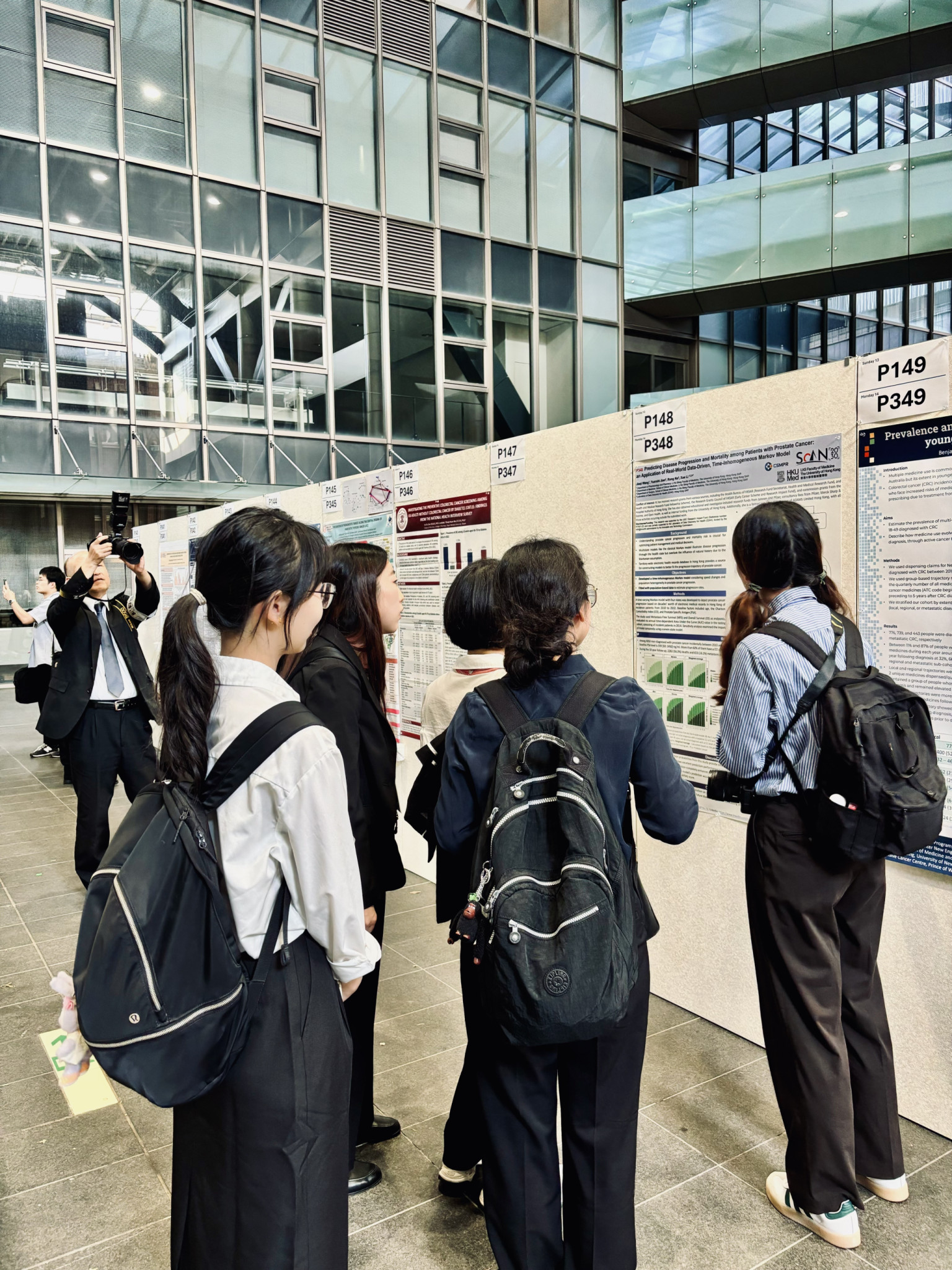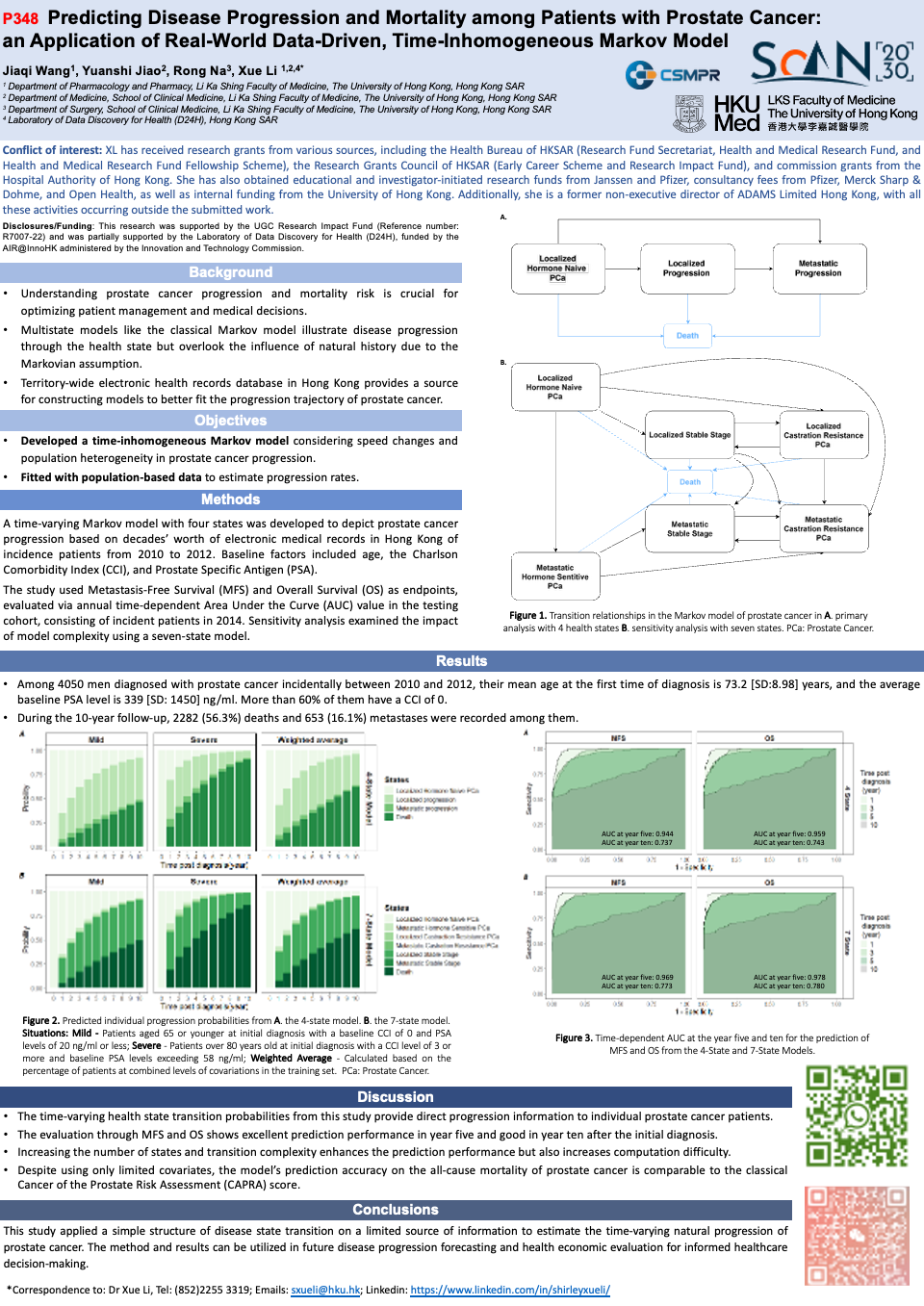
Predict Prostate Cancer Mortality: An Application of Real-World Data-Driven, Time-Inhomogeneous Markov Model
Jiaqi Wang1, Yuanshi Jiao2, Rong Na3, Xue Li1,2,4
ABSTRACT
Introduction
Understanding prostate cancer progression and mortality risk is important for optimised patient management and informed medical decisions. Real-world data provide valuable evidence for model fitting and evaluation to predict mortality.
Aims
This study aims to develop a time-inhomogeneous Markov model using population-based real-world data to estimate prostate cancer progression and predict 10-year mortality risks utilizing baseline characteristics.
Methods
We developed time-inhomogeneous Markov model comprises seven health states related to prostate cancer progression (localized hormone-naive, localized castration resistance, metastasis hormone-sensitive, metastasis castration resistance, remission and death). Hong Kong territory-wide electronic medical database CDARS was the primary data source for real-world transition probability estimation, based on a 10-year follow-up of patients newly diagnosed with prostate cancer between 2011 and 2013. Age, Charlson Comorbidity Index (CCI) and Prostate-Specific Antigen (PSA) were considered for fitting the time-varying transition probability. Model performance was assessed using Mean Average Percentage Error (MAPE) by comparing expected and observed cumulative deaths in the validation cohort of patients diagnosed in 2014.
Results
We identified 3978 incident patients (mean [SD] age, 73.1 [8.80] years) with prostate cancer between 2011 and 2013 with 2037 death recorded during the 10-year follow-up. The MAPE of the 10-year cumulative death in the validation cohort was 0.17, indicating good prediction performance. The most frequently observed group of patients (aged <65, CCI 0, PSA 4-10 ng/mL) had one-year, five-year, and 10-year mortality risks of 3.4%, 22.6%, and 42.8%, respectively. In contrast, severe patients (aged >80 years at diagnosis, CCI >= 3, and PSA >= 100 ng/mL) faced significantly higher risks, with a death probability of 22.4% at year one, 64.3% at year five and 91.3% at year ten.
Discussion
The real-world time-varying Markov model can mimic the disease progression in actual clinical practice, estimate individual mortality risk, and guide early patient management plans for improved survival.
1 Department of Pharmacology and Pharmacy, Li Ka Shing Faculty of Medicine, The University of Hong Kong, Hong Kong SAR
2 Department of Medicine, School of Clinical Medicine, Li Ka Shing Faculty of Medicine, The University of Hong Kong, Hong Kong SAR
3 Department of Surgery, School of Clinical Medicine, Li Ka Shing Faculty of Medicine, The University of Hong Kong, Hong Kong SAR
4 Laboratory of Data Discovery for Health (D24H), Hong Kong SAR

